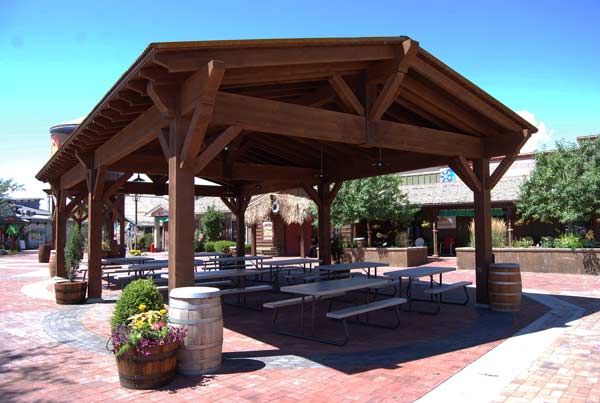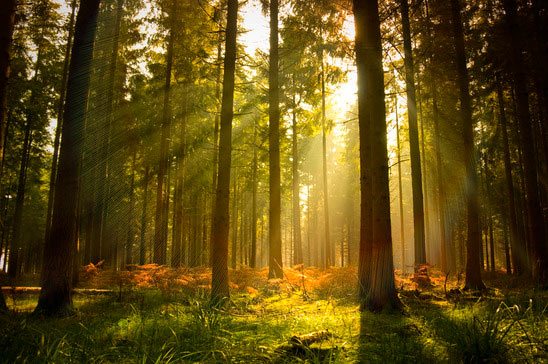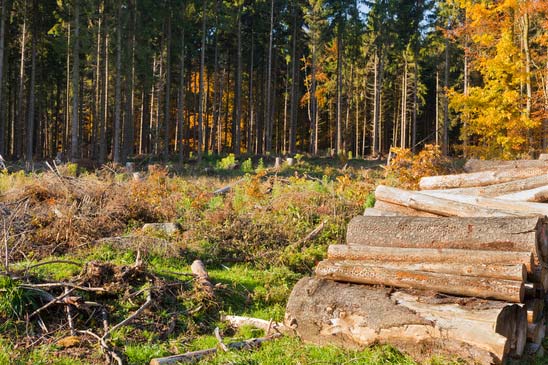Blowing Your Nose & The Affects Upon The Environment
Over six billion people throughout the world wake up everyday with real needs and using wood in many ways they may not even be aware of. If you look around you, almost every item you see has been produced in some way through the means of trees; foods, medicines, shampoo, automobiles, computers, as well as one of the most essential needs: toilet paper. Toilet paper? Toilet paper is an indiscriminating subject and not typically a topic to discuss in public and across the world wide web. There is however, a decades old recirculating and resurfacing question that keeps presenting concerns and creating issues to the public with this question: “Shouldn’t we “conserve”, stop “hurting forests” and “using toilet paper?”
Let me explain conservation through practical experience. My mother was the queen of conservation. She knew what it was to go to bed without food. Waste was a sin and everything was considered a valuable resource to be grateful for. Even the core of an apple she explained should be eaten. Guilt bid me do it for some time, remembering all those starving children in the world who didn’t have life as good as me until one day some roughage roughed up my throat and lodged there. It took me years to not feel guilty when I threw out a well eaten off apple core for compost or to the squirrels letting them enjoy a Thanksgiving feast, too. (Creatures that eat pine cones can probably handle roughage.) Still, Mom was a smart and ever practical woman. She sealed her fruit jars using old inner tubes from tires, made her own homemade soap, bread, quilts and new clothes out of old clothes that came in boxes.
As kids we humorously saw how the ethical-ity of preserving and making do wasn’t always what we deemed to be so ethical. When Mom sewed shirts for us she inevitably made the neck holes to fit the neck without taking into account the circumference of the head. My brother still makes me laugh when he retells what it feels like to be born again every time Mom pealed a shirt on or off his head. I have learned since then that life doesn’t always need to be as painful as we sometimes make it; which leads me to the issue of toilet paper….
Mom believed toilet paper was an unnecessary expense we could live without. We had a cranny out behind our house stocked with either an old phone book or stacks of newspapers. With our indoor bathroom, she cut up rags that we were never to throw inside the toilet or if we forgot and did, we had to fish it out. She burned the used rags later in our wood stove that we depended on for heat.
My mother, as I later learned, was not the only conscientiously conservative person in the world. I acquired a job whereupon my employers had installed new European toilets without providing conventional bathroom tissue. The toilets automatically, unexpectedly squirted you with water to “save the environment”. Having never been warned ahead of time I thought it was horribly humiliating and extremely rude and I found myself offended at a toilet. I suppose it is nicer than resorting to a cactus leaf or as I have heard some claim, a left hand. The first of which I made up and the second I have a hard time believing.
The wonder of rolled or perforated toilet paper began in or around 1880. In 1890 the Scott Company used it as a way to advertise and printed ads on the sheets. As a matter of interest, the Scott Company was too embarrassed to have their name associated with a product as sensitive as toilet paper so they private labeled it under various names. As for the Scott Company’s idea of using tissue for advertising seems like a viable idea in some ways and more interesting than an old phone book. Other items were utilized as well. My mother’s generation humorously referred to the Sears and Roebuck catalogue as the “Rears and Sorebutt” catalogue.
Through life, I have come to love and never ceased to appreciate the genuine goodness of real bathroom tissue, kinder than newspaper and gentler on the nose. At least it is today. It wasn’t until 1935 that the Northern Tissue company came out with “splinter-free” toilet paper. Earlier bathroom tissue technology in production had not been refined enough yet and sometimes…”yes, ouch”… splinters were left embedded within the paper.

Over one hundred years later, some have used advertising as a means to promote guilt for forests that they say are “being destroyed” because people blow their noses and stock bathroom tissue. One of the guilt campaign’s promotion slogans said when you blew your nose in Europe you blew away the ancient forests of Canada to encourage people to stop buying tissue made from Canadian pulp. British Columbia’s pulp and the paper industry is made entirely from the waste of the sawmill industry so that nothing goes to waste. Thirty percent of the wood used is pulp that is waste that would otherwise have to be burned or left to rot.

Bathroom tissue is a wonderful preventative to waste. I believe in conservation, frugality and not wasting. I was educated by the best. I have also learned to never take toilet paper for granted. I still don’t use twelve yards at a time but it is wonderful to know that bathroom tissue is not only good for my happiness but blowing the nose is good for the environment and helps to plant more trees.
Our eyes provide us data that our brain does not always give us the correct interpretation of. It is easy to look out over a freshly harvested forest and see its ugliness and not understand its beauty. Ceasing to do sustainable logging would bring disaster upon all species, including human beings. Conservation is vitally important but sometimes like the old saying kind of goes while ‘straining at an ant’, ‘you cannot see the forest from the trees’, the bigger picture.

Fire is the second greatest threat doing the greatest damage to forest, the first being uneducated and misinformed people in their understanding of what sustainable commercial logging really does for the wellbeing of the earth. For example, in 1980, Washington State’s Mt. Saint Helens volcano irrupted and destroyed over 150,000 acres of Federal public and private forests. The Federal public forests have been left to itself for regrowth. Today those public Federal forests still look like a desert, a desert by which they estimate will take perhaps another 200 years to recover. Private foresters salvaged dead trees dug down into the ash and placed in new seedlings. Today it is a beautiful forest and they plan to harvest their trees in 2026.

Dr. Patrick Moore, co-founder of Greenpeace an international environmental movement for over forty years had a change of vision when his eyes were opened to a new understanding. The only one of his former colleagues who has a degree in science and biology, Dr. Moore wrote two very interesting books titled Confessions of a Greenpeace Dropout and Green Spirit: Trees Are the Answer. This is a one hundred and eighty degree turn from his previous outlook. He studied the incredible benefits of sustainable forestry and how it improved the environment and that lobbying against commercial logging was without reasoning based upon science.
Dr. Moore explains that over one third of the world is dependent upon wood for heating and eating. If we did not use wood and switched to fossil it would be devastating to our environment. Oil, plastics, steel and all other substitutes require much more energy to produce and products like coal and oil which are non renewable. Once they are used they are gone forever.

Alarmist campaigns still continue on the back of political agendas even though there is 380% more timber today than there was in 1920. Historical records clearly inform us of the amount of timber in previous generations of America and there is exponentially more timber in America now than in the last in previous centuries.

If people stopped purchasing and using timber it would like someone saying, “Let’s stop buying wheat.” And because no one buys wheat from the farmer he would stop planting it because he cannot survive selling wheat no one will buy. The farmer would not be the only one to face hardship. Those who quit buying from him would also. The sustainable forestry industry could not survive and could not reseed the forests if no one purchased their products either and we would all be affected.
The World Wide Fund for Nature in 1996 at a UN meeting sensationally cried that over 50 thousand species are missing due to human activity mainly from commercial logging. The media asked no questions and the WWF gave no evidence and yet newspapers printed the story claiming that commercial loggers were the main cause of destroying animal species even though not even one species was proven missing or gone. The WWF has failed to support any of its accusations and the forestry myth of species extinction alarm continues to be sounded.
Forest management helps all wildlife, stimulating growth for their food sources and creates openings; which has resulted in deer, antelope, elk and turkeys to increase greatly in numbers. It is a requirement of sustainable forestry to promote the conservation of plants and animal populations for habitat diversity. When a forest is harvested it may look deforested and somewhat ugly and yet trees are not only essential for providing food and habitation for insect and mammals but trees are essential in all of our daily lives.
Eight percent of the world’s forests are contained in the United States. One of the misconceptions sometimes given is that the early U.S. was covered with a carpet of trees from coast to coast and that we have only a tiny percent of original ancient forests. In the 1600’s less than half of the United States was covered in forest. U.S. government studies state that no more than one third of the coastal Northwest was covered in trees. Native Americans routinely cleared forest by fire along with natural wildfires.

The United States is also rich in old growth and ancient forests. Large trees of 200 years and older cover 13.2 million acres; which is the area about the size of Massachusetts and New Jersey combined and due to legal prohibitions will never be harvested. The U.S. also has 104 million acres of land permanently protected as well as 270 million acres prohibiting logging, mining, grazing or commercial activity.
Like a wheat farmer, encouraging and supporting our loggers in growing more trees will make a stronger, healthier earth. Trees are our most environmentally friendly resource and they are renewable. Through sustainable forestry a new forest takes root, makes a better world providing America with healthy trees for the next generation to also blow their little noses with a clean conscience.







